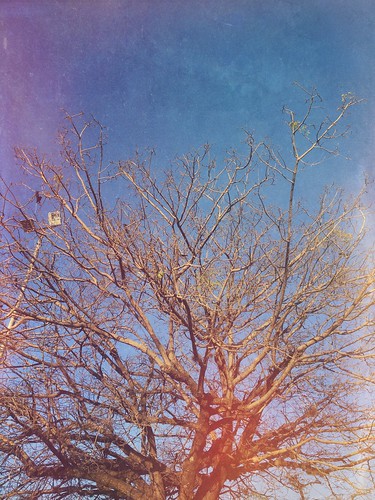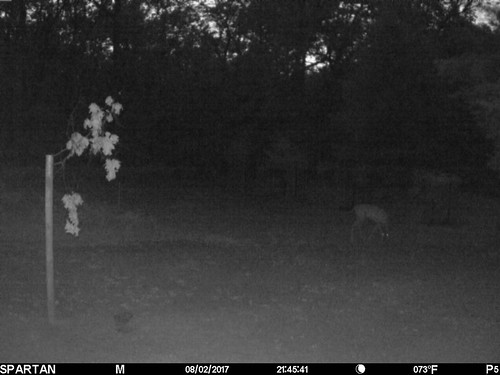R 20 minutes at 65uC after adding saturated (5M) NaCl (72 ml) and 0.1 g glass beads (0.1 mm, Biospec Inc). DNA was extracted using phenol:chloroform:isoamyl alcohol (25:24:1) and precipitated with 100 ethanol. The DNA content of G+ and G2 bacteria was quantified by qPCR (IQ5, Bio-Rad, Hercules, CA) using G+ and G2 specific forward premiers (G+-F and G2-F) and reversal primer for universal bacterial. Total 16S DNA was used as positive control and the result was analyzed by delta-delta CT method after normalization with 16S DNA. G+/G2 ratio was calculated. Each sample was analyzed in triplicate and the experiments were repeated twice. All the samples were negative for 18S DNA indicating that there was no eukaryotic cell contamination.Flow Cytometry AnalysisThe expression of different surface markers and intracellular cytokines (ICC) in LMNCs was analyzed by flow cytometry. LMNCs were first incubated with Fc block (2G4, eBioscience) at 4uC for 15 min followed by further incubation with different fluorochrome-conjugated mAbs at optimal concentrations for 30 min. The cells were then washed twice with PBS containing 2 FBS and fixed in 1 paraformaldehyde prior to data collection by flow cytometry. For ICC staining, LMNCs were stimulated with PMA (20 ng/mL), Ionomycin (1 mmol/L) and Golgi plug (1 ) for 5 hrs. Cell surface markers and ICC were then stained after stimulation according to the manufacturer’s protocol (eBioscience). Data were collected using a LSRII flow cytometer (BD Biosciences) and data analysis was performed using FlowJo software (TreeStar).Serum Alanine Mirin Aminotransferase (ALT) ActivityThe level of serum ALT was measured using a commercial kit (Cayman Chemical, Ann Arbor, MI) according to the manufacturer’s Terlipressin instructions.IRAK-M Regulates Liver InjuryIRAK-M Regulates Liver InjuryFigure 3. Flow cytometric analysis of immune cell composition in liver after alcohol treatment. (A) Representative histograms of liver mononuclear cells (LMNCs) in wild type B6 mice (upper panel) and IRAK-M2/2 mice (lower panel). (B) Summary of immune cell composition of LMNC in wild type B6 (blue) and IRAK-M2/2 mice (red) in ALC groups. (C) Summary of immune cell composition of LMNC in wild type B6 (blue) and IRAKM2/2 mice (red) in CTL groups. (D)  Representative dot plots of Treg (CD4+Foxp3+) cells in total LMNCs of control (CTL, left panel) and binge alcohol treated (ALC, right panel) WT B6 (upper panel) and IRAK-M2/2 mice (lower panel). (E) Summary of percentage of Treg cells in total LMNCs of CTL and ALC treated WT B6 (blue) and IRAK-M2/2 B6 (red) mice. (F) Representative dot plots of Treg (CD4+Foxp3+) cells in total splenocytes of control (CTL, left panel) and alcohol treated (ALC, right panel) WT B6 (upper panel) and IRAK-M2/2 mice (lower panel). (G) Summary of percentage of Treg cells in total splenocytes of CTL and ALC treated WT B6 (blue) and IRAK-M2/2 B6 1326631 (red) mice. Error bars represent the SD of samples within a group. The experiment was performed 3 times and the data presented are from one of the 3 experiments. **P,0.01, Two way ANOVA analysis. N.S. not statistically significant. doi:10.1371/journal.pone.0057085.gStatistical AnalysisStatistical analysis was performed using GraphPad Prism software. Non-parametric two-way ANOVA was used in most experiments and P values of less than 0.05 were considered significant.tested by SNP using Illumina bead chip. We used C57B/L6 mice from the Jackson Laboratory as controls, and these mice were used to ba.R 20 minutes at 65uC after adding saturated (5M) NaCl (72 ml) and 0.1 g glass beads (0.1 mm, Biospec Inc). DNA was extracted using phenol:chloroform:isoamyl alcohol (25:24:1) and precipitated with 100 ethanol. The DNA content of G+ and G2 bacteria was quantified by qPCR (IQ5, Bio-Rad, Hercules, CA) using G+ and G2 specific forward premiers (G+-F and G2-F) and reversal primer for universal bacterial. Total 16S DNA was used as positive control and the result was analyzed by delta-delta CT method after normalization with 16S DNA. G+/G2 ratio was calculated. Each sample was analyzed in triplicate and the experiments were repeated twice. All the samples were negative for 18S DNA indicating that there was no eukaryotic cell contamination.Flow Cytometry AnalysisThe expression of different surface markers and intracellular cytokines (ICC) in LMNCs was analyzed by flow cytometry. LMNCs were first incubated with Fc block (2G4, eBioscience) at 4uC for 15 min followed by further incubation with different fluorochrome-conjugated mAbs at optimal concentrations for 30 min. The cells were then washed twice with PBS containing 2 FBS and fixed in 1 paraformaldehyde prior to data collection by flow cytometry. For ICC staining, LMNCs were stimulated with PMA (20 ng/mL), Ionomycin (1 mmol/L) and Golgi plug (1 ) for 5 hrs. Cell surface markers and ICC were then stained after stimulation according to the manufacturer’s protocol (eBioscience). Data were collected using a LSRII flow cytometer (BD Biosciences) and data analysis was performed using FlowJo software (TreeStar).Serum Alanine Aminotransferase (ALT) ActivityThe level of serum ALT was measured using a commercial kit (Cayman Chemical, Ann Arbor, MI) according to the manufacturer’s instructions.IRAK-M Regulates Liver InjuryIRAK-M Regulates Liver InjuryFigure 3. Flow cytometric analysis of immune cell composition in liver after alcohol treatment. (A) Representative histograms of liver mononuclear cells (LMNCs) in wild type B6 mice (upper panel) and IRAK-M2/2 mice (lower panel). (B) Summary of immune cell composition of LMNC in wild type B6 (blue) and IRAK-M2/2 mice (red) in ALC groups. (C) Summary of immune cell composition of LMNC in wild type B6 (blue) and IRAKM2/2 mice (red) in CTL groups. (D) Representative dot plots of Treg (CD4+Foxp3+) cells in total LMNCs of control (CTL, left panel) and binge alcohol treated (ALC, right panel) WT B6 (upper panel) and IRAK-M2/2 mice (lower panel). (E) Summary of percentage of Treg cells in total LMNCs of CTL and ALC treated WT B6 (blue) and IRAK-M2/2 B6 (red) mice. (F) Representative dot plots of Treg (CD4+Foxp3+) cells in total splenocytes of control (CTL, left panel)
Representative dot plots of Treg (CD4+Foxp3+) cells in total LMNCs of control (CTL, left panel) and binge alcohol treated (ALC, right panel) WT B6 (upper panel) and IRAK-M2/2 mice (lower panel). (E) Summary of percentage of Treg cells in total LMNCs of CTL and ALC treated WT B6 (blue) and IRAK-M2/2 B6 (red) mice. (F) Representative dot plots of Treg (CD4+Foxp3+) cells in total splenocytes of control (CTL, left panel) and alcohol treated (ALC, right panel) WT B6 (upper panel) and IRAK-M2/2 mice (lower panel). (G) Summary of percentage of Treg cells in total splenocytes of CTL and ALC treated WT B6 (blue) and IRAK-M2/2 B6 1326631 (red) mice. Error bars represent the SD of samples within a group. The experiment was performed 3 times and the data presented are from one of the 3 experiments. **P,0.01, Two way ANOVA analysis. N.S. not statistically significant. doi:10.1371/journal.pone.0057085.gStatistical AnalysisStatistical analysis was performed using GraphPad Prism software. Non-parametric two-way ANOVA was used in most experiments and P values of less than 0.05 were considered significant.tested by SNP using Illumina bead chip. We used C57B/L6 mice from the Jackson Laboratory as controls, and these mice were used to ba.R 20 minutes at 65uC after adding saturated (5M) NaCl (72 ml) and 0.1 g glass beads (0.1 mm, Biospec Inc). DNA was extracted using phenol:chloroform:isoamyl alcohol (25:24:1) and precipitated with 100 ethanol. The DNA content of G+ and G2 bacteria was quantified by qPCR (IQ5, Bio-Rad, Hercules, CA) using G+ and G2 specific forward premiers (G+-F and G2-F) and reversal primer for universal bacterial. Total 16S DNA was used as positive control and the result was analyzed by delta-delta CT method after normalization with 16S DNA. G+/G2 ratio was calculated. Each sample was analyzed in triplicate and the experiments were repeated twice. All the samples were negative for 18S DNA indicating that there was no eukaryotic cell contamination.Flow Cytometry AnalysisThe expression of different surface markers and intracellular cytokines (ICC) in LMNCs was analyzed by flow cytometry. LMNCs were first incubated with Fc block (2G4, eBioscience) at 4uC for 15 min followed by further incubation with different fluorochrome-conjugated mAbs at optimal concentrations for 30 min. The cells were then washed twice with PBS containing 2 FBS and fixed in 1 paraformaldehyde prior to data collection by flow cytometry. For ICC staining, LMNCs were stimulated with PMA (20 ng/mL), Ionomycin (1 mmol/L) and Golgi plug (1 ) for 5 hrs. Cell surface markers and ICC were then stained after stimulation according to the manufacturer’s protocol (eBioscience). Data were collected using a LSRII flow cytometer (BD Biosciences) and data analysis was performed using FlowJo software (TreeStar).Serum Alanine Aminotransferase (ALT) ActivityThe level of serum ALT was measured using a commercial kit (Cayman Chemical, Ann Arbor, MI) according to the manufacturer’s instructions.IRAK-M Regulates Liver InjuryIRAK-M Regulates Liver InjuryFigure 3. Flow cytometric analysis of immune cell composition in liver after alcohol treatment. (A) Representative histograms of liver mononuclear cells (LMNCs) in wild type B6 mice (upper panel) and IRAK-M2/2 mice (lower panel). (B) Summary of immune cell composition of LMNC in wild type B6 (blue) and IRAK-M2/2 mice (red) in ALC groups. (C) Summary of immune cell composition of LMNC in wild type B6 (blue) and IRAKM2/2 mice (red) in CTL groups. (D) Representative dot plots of Treg (CD4+Foxp3+) cells in total LMNCs of control (CTL, left panel) and binge alcohol treated (ALC, right panel) WT B6 (upper panel) and IRAK-M2/2 mice (lower panel). (E) Summary of percentage of Treg cells in total LMNCs of CTL and ALC treated WT B6 (blue) and IRAK-M2/2 B6 (red) mice. (F) Representative dot plots of Treg (CD4+Foxp3+) cells in total splenocytes of control (CTL, left panel)  and alcohol treated (ALC, right panel) WT B6 (upper panel) and IRAK-M2/2 mice (lower panel). (G) Summary of percentage of Treg cells in total splenocytes of CTL and ALC treated WT B6 (blue) and IRAK-M2/2 B6 1326631 (red) mice. Error bars represent the SD of samples within a group. The experiment was performed 3 times and the data presented are from one of the 3 experiments. **P,0.01, Two way ANOVA analysis. N.S. not statistically significant. doi:10.1371/journal.pone.0057085.gStatistical AnalysisStatistical analysis was performed using GraphPad Prism software. Non-parametric two-way ANOVA was used in most experiments and P values of less than 0.05 were considered significant.tested by SNP using Illumina bead chip. We used C57B/L6 mice from the Jackson Laboratory as controls, and these mice were used to ba.
and alcohol treated (ALC, right panel) WT B6 (upper panel) and IRAK-M2/2 mice (lower panel). (G) Summary of percentage of Treg cells in total splenocytes of CTL and ALC treated WT B6 (blue) and IRAK-M2/2 B6 1326631 (red) mice. Error bars represent the SD of samples within a group. The experiment was performed 3 times and the data presented are from one of the 3 experiments. **P,0.01, Two way ANOVA analysis. N.S. not statistically significant. doi:10.1371/journal.pone.0057085.gStatistical AnalysisStatistical analysis was performed using GraphPad Prism software. Non-parametric two-way ANOVA was used in most experiments and P values of less than 0.05 were considered significant.tested by SNP using Illumina bead chip. We used C57B/L6 mice from the Jackson Laboratory as controls, and these mice were used to ba.
